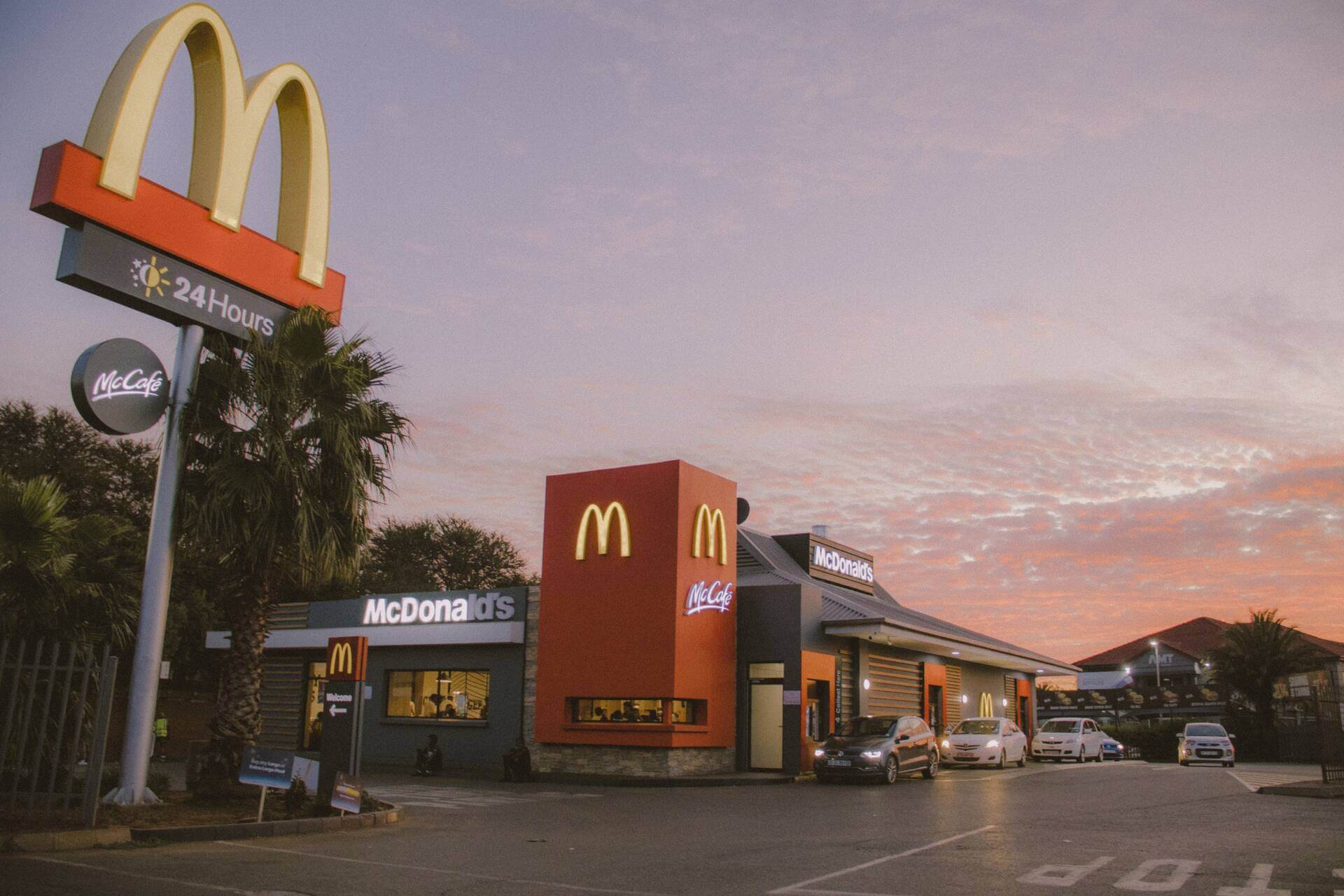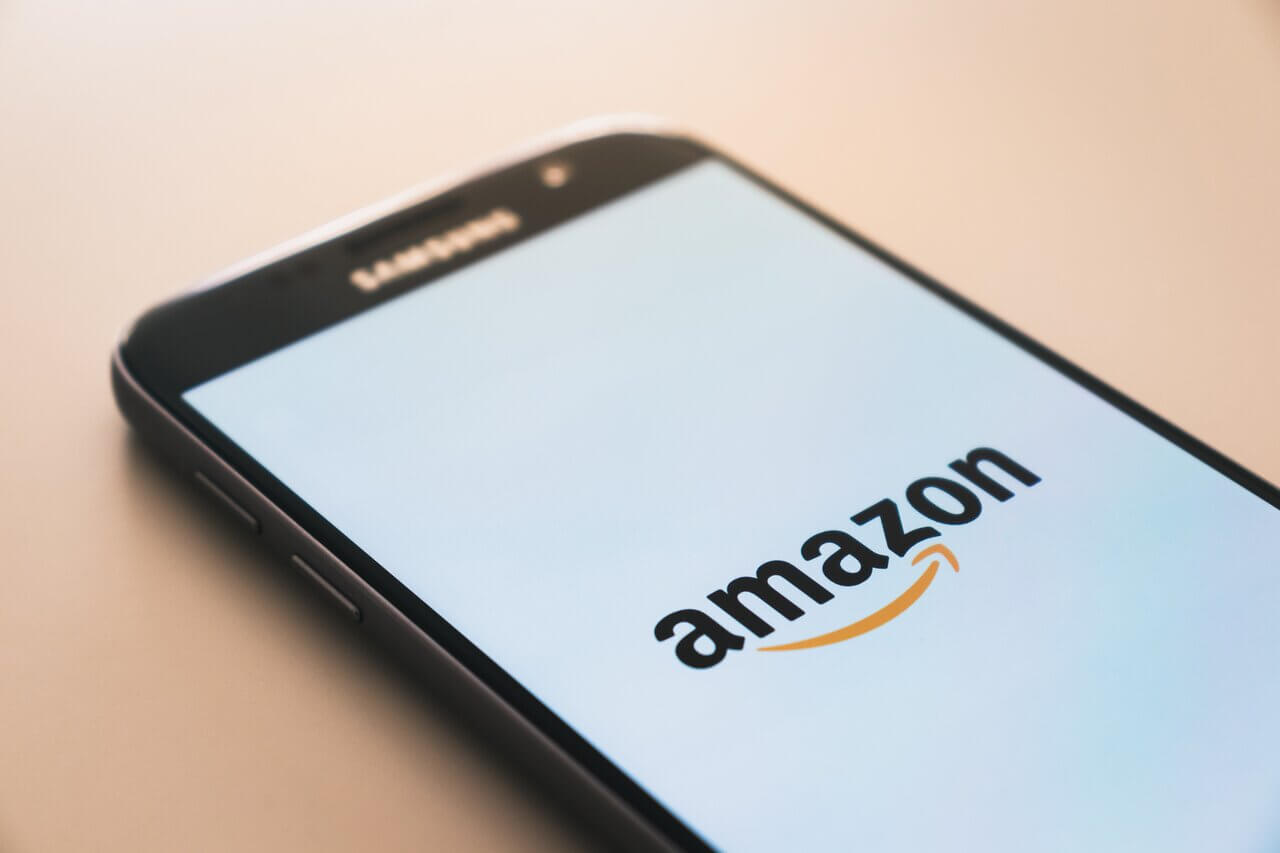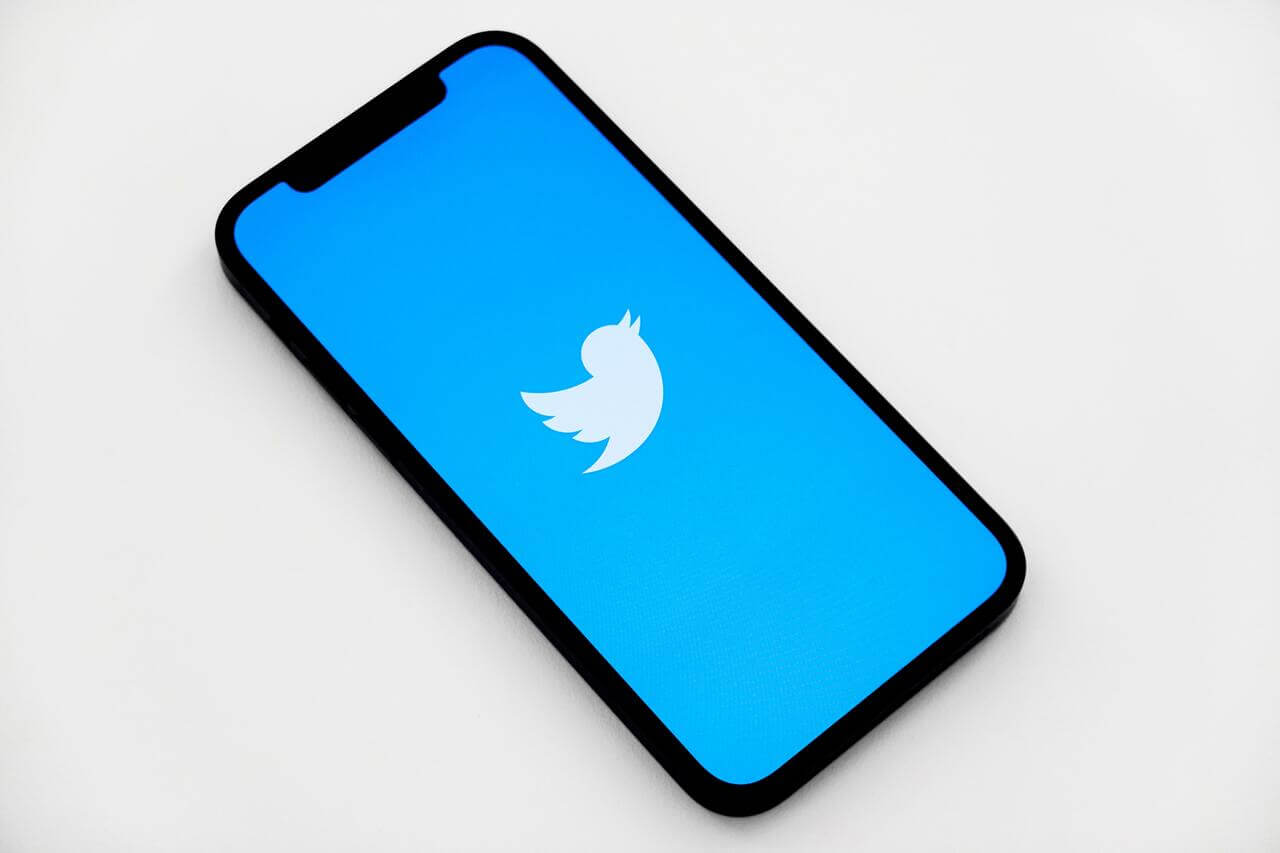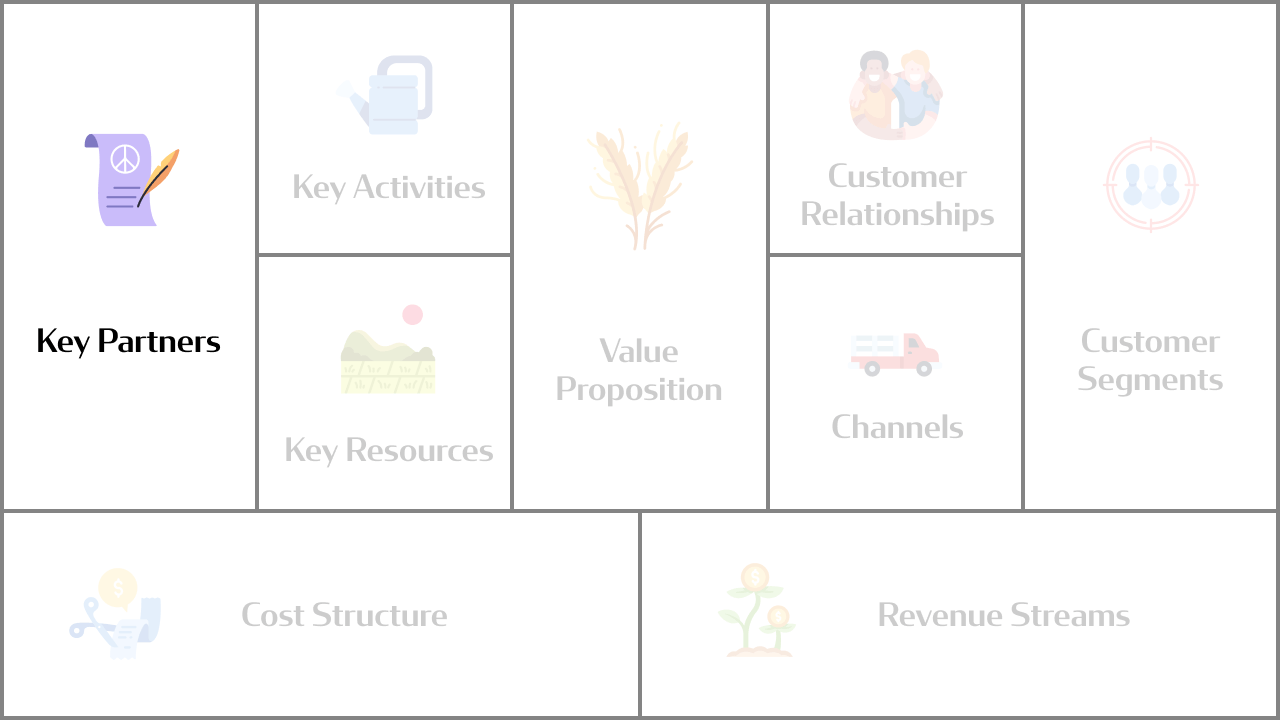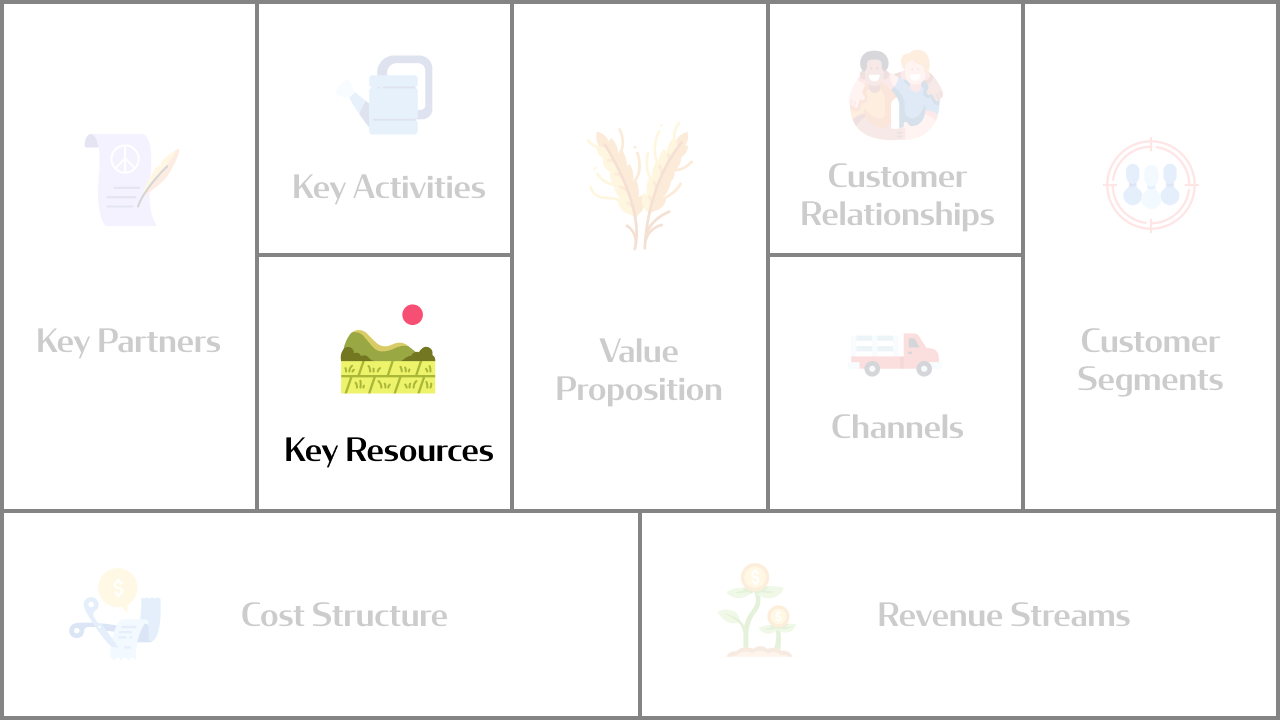The last (but not least) segment on the Business Model Canvas is the cost structures. In this segment, you must ask yourself, how much will it cost to run this model? What are the most essential costs? Which costs cannot be managed? And lastly, what resources and activities can you manage or reduce costs?
The answers to these questions are your starting point.
Suppose you’re unsure what to include in your cost structure. In that case, you may start with some more obvious needs such as manufacturing costs, physical space, rent, payroll, and marketing activities. Once that’s done, you should prioritize your key resources and activities and determine whether they are fixed, variable costs, or set-up costs like building a factory or developing a website.
Cost structures include the primary sources from which your business incurs a cost, so you must look at your entire business model canvas for this.
Note that different business models will have different costs attached to them. Some businesses will require a large amount of capital to function. For example, for SpaceX to launch one Falcon 9 rocket into space costs an average of $57 million.
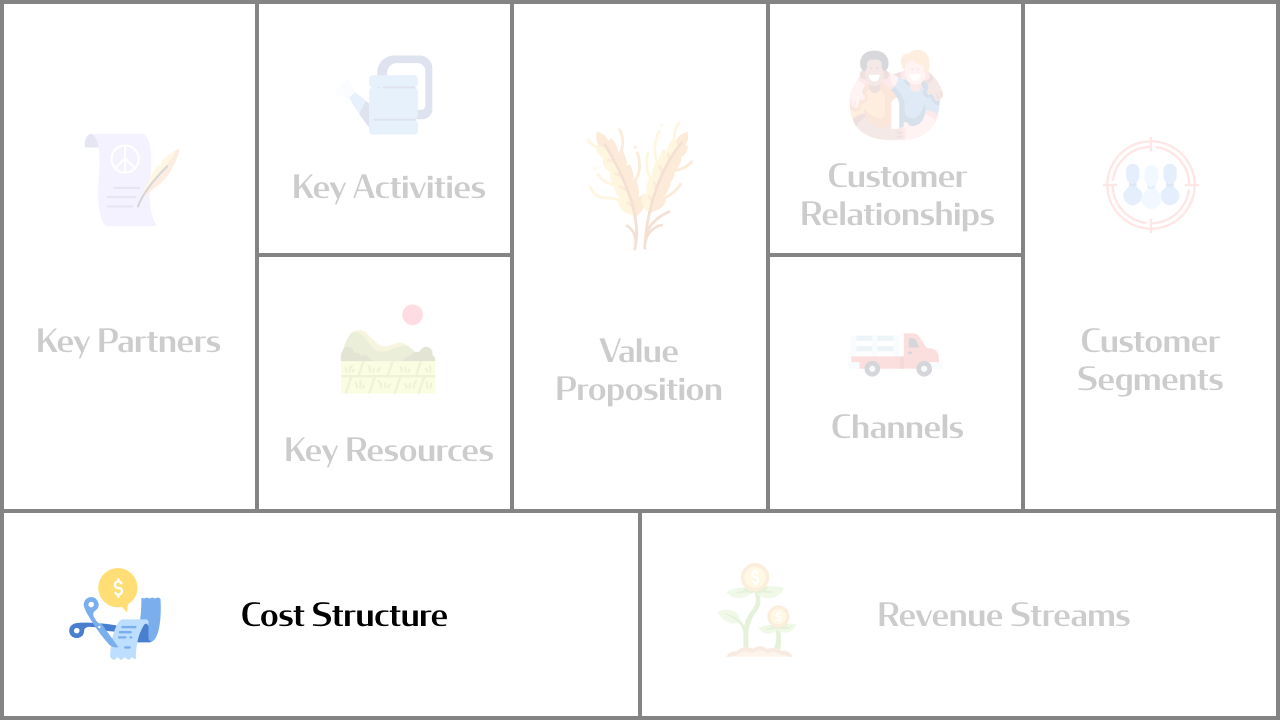
Types of Costs
Businesses can be cost-driven, meaning the focus is on minimizing costs whenever possible and delivering an affordable product or service to the customer. IKEA, for instance, has always been focused on providing cheap furniture to the mass market.
Or they can be value-driven, meaning the focus is on providing maximum value to the customer. Luxury brands like Mercedes and Gucci are great examples of this.
A Cost Structures can have the following elements:
- Fixed cost
These expenses remain the same despite the volume of goods or services produced. Some industries, such as manufacturing, are characterized by a high proportion of fixed costs.
Examples of fixed costs include:
- Salaries
- Rents
- Physical manufacturing facilities
- Advertising and marketing expenses
- Depreciation
- Insurance
Uber’s fixed costs, for example, would include insurance costs related to the rides, incentives paid to drivers, platform maintenance, and insurance for Uber Freight.
Another example would be the money that the airlines pay to the airports. Usually, there is a fixed component known as the yearly fee, so regardless of how many customers fly, this cost will always exist.
- Variable cost
These costs vary according to the volume of goods or services produced. Some businesses, such as restaurants and car makers like Ford or Tesla (each car costs a lot of money to produce), music festivals, are characterized by a high proportion of variable costs. Each booking at Airbnb, for instance, has the following variable costs: cleaning costs, maintenance, and service fees.
Examples of variable costs include:
- Shipping costs
- Utility bills like water and electricity that change according to usage
- Raw material cost
- Labor costs
- Packing supplies
- Commissions
- Economies Of Scale
These are savings generated when the cost of producing a range of products together is cheaper than manufacturing them individually. So, for example, you may have several products that share the same marketing activities or distribution channels.
Big companies benefit from this because they can process higher volumes which spread fixed costs; hence the average price per unit is reduced. The Ford Motor Company’s assembly line is an excellent example of this. It allowed the company to produce higher volumes of cars and car parts at a fraction of the time and cost.
- Economies Of Scope
This refers to reducing costs when a business invests in multiple markets or a more extensive scope of operations. The average production price decreases if you decide to increase the number of goods you produce. Apple is a good example of this. While its current primary product is the iPhone (it used to be personal computers), Apple produces iPads, smartwatches, personal computers, and other types of electronic equipment. They are also heavily invested in the music and TV industry with their iTunes, Apple Music, and Apple TV products.
One thing to note is that economies of scope based on product diversification are only achieved if the different products have standard processes or share the use of some resource.
Why is it Important to Manage Costs?
One of the ways you can maximize profits is to minimize costs. Some fixed costs are crucial to your company’s daily operations. As a business owner, you should always review your financial statements to identify expenses that add no value to core business activities.
When you understand the overall cost structure of your business, you can identify cost reduction methods without compromising your value proposition. Moreover, you must keep a close eye on the cost trends of your industry so that you can have stable cash flows with no hidden cost spikes.
Managing and allocating costs is essential for your business. Misallocated and mismanaged costs can have dire consequences. For example, you might end up overpricing or underpricing a product or investing unnecessary resources in non-profitable products.
Take Amazon, for example; between 1998 and 2000, the company went on a shopping spree, acquiring different companies in different industries at an alarming speed. The first of these was a misadventure into toys.
The challenge with toys was that there were no leading distributors. Amazon would have to buy the toys from the manufacturers and store them physically, hoping they would sell. This was the total opposite of Amazon’s business model. Still, Bezos was adamant, spending 120 million U.S dollars to buy toys against the advice of his executives.
By the end of that adventure, over 50 million toys were left with no one to sell them to and nowhere to keep them. Amazon ended up selling the toys to exporters at ridiculously low prices and donating some of them to various charities.
How to Come Up with a Good Cost Structure Segment
One of the main reasons start-ups and businesses fail is that they run out of money. So, you’ll need to ensure that your business model carefully matches your cash flow. Managing your cost structure is as important as ensuring your revenue streams are intact and that you have sufficient profit margins.
In fact, how much you’re going to make in revenue streams is directly determined by your cost structure.
A few key questions to ask yourself include:
- How much will the key activities cost the business?
- How much will cost keeping customer relationships and channels?
- How much will cost attracting new clients and retaining existing ones?
- What are the costs of your key resources and key partnerships?
- How much does it cost to achieve the value proposition for my customers/users?
- Are there any additional or possible unforeseen expenses? Legal? Insurance?
- What are the costs variable or fixed?
- What are setup costs?
- How much will cost forging or executing partnerships?

